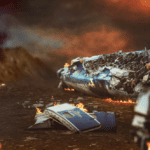 Weird Stuff
Weird Stuff  Weird Stuff
Weird Stuff  Mysteries
Mysteries 10 Tragic Disappearances and Deaths in Joshua Tree National Park
 History
History 10 Ways Childhood Really Sucked in the Old West
 Music
Music 10 Name Origins of Famous Bands from the 1990s
 Religion
Religion 10 Biggest Turnarounds by the Catholic Church
 Weird Stuff
Weird Stuff 10 Unbelievable Times Laws Had Unintended Consequences
 Humans
Humans Ten Historic Women Who Deserve Way More Credit Than They Got
 Movies and TV
Movies and TV 10 Films That Spawned Major Lawsuits
 History
History Ten Times Towns Were Wiped Off the Face of the Earth
 Creepy
Creepy 10 of the Most Disturbingly Haunted Public Houses in the UK
 Weird Stuff
Weird Stuff 10 Niche Subcultures That Are More Popular Than You Might Think
 Mysteries
Mysteries 10 Tragic Disappearances and Deaths in Joshua Tree National Park
 History
History 10 Ways Childhood Really Sucked in the Old West
Who's Behind Listverse?

Jamie Frater
Head Editor
Jamie founded Listverse due to an insatiable desire to share fascinating, obscure, and bizarre facts. He has been a guest speaker on numerous national radio and television stations and is a five time published author.
More About Us Music
Music 10 Name Origins of Famous Bands from the 1990s
 Religion
Religion 10 Biggest Turnarounds by the Catholic Church
 Weird Stuff
Weird Stuff 10 Unbelievable Times Laws Had Unintended Consequences
 Humans
Humans Ten Historic Women Who Deserve Way More Credit Than They Got
 Movies and TV
Movies and TV 10 Films That Spawned Major Lawsuits
 History
History Ten Times Towns Were Wiped Off the Face of the Earth
 Creepy
Creepy 10 of the Most Disturbingly Haunted Public Houses in the UK
Top 10 Shocking Historical Firsts
The world is full of notable firsts. History tends to remember events that influence the scale of time. On 29 May 1953, at the age of 33, New Zealand mountaineer Sir Edmund Hillary and Sherpa Tenzing Norgay became the first climbers known to have reached the summit of Mount Everest. On 16 July 1945, the United States Army conducted the first nuclear weapons test of an atomic bomb, named Trinity. The bomb was exploded in the Jornada del Muerto desert, about 35 miles (56 km) southeast of Socorro, New Mexico.
In 1872, the world’s first international football match was played in Glasgow between Scotland and England, which ended in a 0–0 draw. In 1930, the first FIFA World Cup was won by the host nation, Uruguay. In 1973, Secretariat became the first racehorse to finish the Kentucky Derby in less than 2 minutes, a time that remains the best in Kentucky Derby history. The Maxim gun was the first self-powered machine gun, invented by the American-born British inventor Sir Hiram Maxim in 1884. As you can see, there are literally thousands of historical firsts across a wide range of topics. This article will focus on ten that you haven’t read before. I tried to select shocking events that are relevant to current world trends.
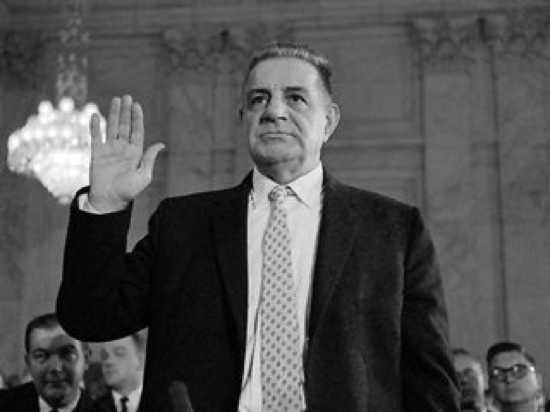
First Person to Expose the Mafia
Joseph Valachi was born in East Harlem, New York City, on 22 September 1904. His criminal career began with a small gang named The Minutemen. The gang was known for being able to carry out burglaries and escape in under a minute. In the early 1930s, Valachi was introduced to the Cosa Nostra and became a soldier in the Reina Family (now known as the Lucchese Family) during the height of the Castellammarese War. Valachi fought on the side of Salvatore Maranzano, who eventually defeated rival Joseph Masseria. After Maranzano was murdered in 1931, Valachi became a soldier in the Genovese Family headed by Charles “Lucky” Luciano.
In October 1963, Joseph Valachi became an informant for the FBI and testified that the Mafia did exist. He was the first person to publicly acknowledge the Mafia. Valachi’s disclosures did not lead to the prosecution of crime leaders. However, he was able to provide many details on the organization’s history, operations, and rituals. Valachi named members of major crime families and aided in several unsolved murders. His testimony was broadcast on radio and television and published in newspapers. In the early 1960s, Joseph Valachi made the Cosa Nostra a household name.
Valachi’s motivations for becoming an informant have been debated. In 1962, while in prison for heroin trafficking, Valachi murdered a man he feared was sent to kill him. Joseph claimed that he testified against the Mafia as a public service, but he might have been attempting to get his prison sentence reduced. In 1966, Valachi attempted to hang himself using an electrical extension cord. He died of a heart attack in 1971, at La Tuna Federal Correctional Institution in Texas. The $100,000 bounty placed on his head went uncollected. Joseph Valachi inspired the characters of Willi Cicci and Frank Pentangeli in the hit film The Godfather Part II (1974).

First Commercially Viable American Skin Flick
The Immoral Mr. Teas (1959) is the first successful film by director Russ Meyer. Meyer is known for writing and directing a series of low-budget “sexploitation” films that feature camp humor, sly satire and large-breasted women. The Immoral Mr. Teas consists of a series of short scenes in which Mr. Teas is overcome with fantasies of nude women. The only nudity in the movie is seen through the viewpoint of Mr. Teas. His fantasies always result in a number of bizarre situations.
In the movie, Mr. Teas (Bill Teas) is a delivery man who works for a dentist. After he undergoes a procedure to get a molar removed and is given an analgesic to ease the pain, Teas discovers that every woman he comes across is naked, even his dental assistant. Before the film was released, the only moving pictures that exhibited extensive nudity were either underground pornographic films, typically distributed in 16 mm black and white film, or naturist pictures, which were shown in specialized movie theaters.
The Immoral Mr. Teas was the first American “above ground” movie since the early sound era to show female nudity without the pretext of naturism. It is considered to be the first commercially viable American “skin flick.” Some consider it to be the first pornographic film. The movie spawned a wave of “Nudies” that were produced for grindhouse theaters in the 1960s.
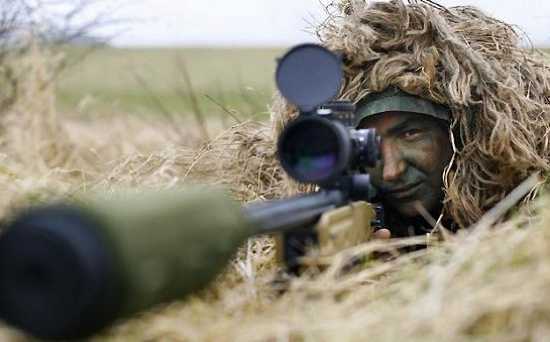
First Person to Record a Sniper Kill at a Range of 2,475 m (2,707 yd)
Craig Harrison is a member of the Household Cavalry of the British armed forces. In 2009, while participating in the War in Afghanistan, Harrison shot two Taliban machine gunners south of Musa Qala in the Helmand Province of Afghanistan at a range of 2,475 m (2,707 yd) using an L115A3 Long Range Rifle. The shot was from approximately 1.53 miles (2.4 km) away. It is the longest confirmed sniper kill in combat.
Craig Harrison was nearly 3,000 feet beyond the effective range of his Long Range Rifle at the time of the shots. The bullets took almost three seconds to reach their target. The distance was so great that the Taliban members probably didn’t hear the shots. In a BBC interview, Harrison reported it took about nine shots for him and his spotter to range the targets, and then his first attempt was a kill shot. The bullets were aided by the ambient air density near the valley in which Musa Qala is situated. Harrison said the environmental conditions were perfect for long range shooting – with no wind, mild weather and clear visibility.
Craig’s shot passed the previous record set by Canadian corporal Rob Furlong in 2002, by 45 m (49 yd). In a remarkable tour of duty, Craig Harrison cheated death a few weeks after the event when a Taliban bullet pierced his helmet but was deflected away from his skull. Harrison later broke both arms when his army vehicle was hit by a roadside bomb. After the bombing, Craig was sent back to the UK for treatment, but insisted on returning to the front line after making a full recovery. He has since said the injury didn’t affect his natural sniper ability.
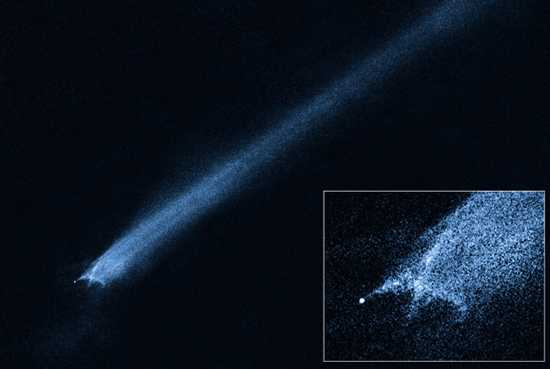
First Small-Body Collision between Asteroids
On 6 January 2010, the Lincoln Near-Earth Asteroid Research (LINEAR) project discovered a mysterious X-shaped Solar System body, named P/2010 A2, traveling at 11,000 mph. The object has confused astronomers because it shows characteristics of both an asteroid and a comet. It has the orbit of a main-belt asteroid and the tail of a comet. For this reason, P/2010 A2 was originally listed as a main-belt comet.
Within a month of the discovery, analysis of the images captured by the Hubble telescope suggested that P/2010 A2 was generated from a recent head-on collision between asteroids. It was the first time a small-body collision by asteroids had been observed. The evidence was supported by the position of the object’s nucleus, which is offset from the axis and outside of the dust halo. P/2010 A2 has no sign of an active nucleus, which has caused scientists to believe it was moved in an impact event.
NASA determined that the nucleus was the “surviving remnant of a hypervelocity collision,” when two small and previously unknown asteroids hit. This event created a shower of debris that is being swept back into the tail by the pressure of the sunlight. The X-shaped debris pattern of P/2010 A2 is unusual and has confused scientists.
Before it was determined that P/2010 A2 came from an asteroid collision, some speculated that it may be a rare carbonaceous asteroid located in the inner main belt. If true, this would suggest that there are more volatile-rich asteroids closer to Earth. The orbit of P/2010 A2 is consistent with the Flora asteroid family, which was produced more than 100 million years ago. The Flora family of asteroids may be the source of the K/T impactor, which is the likely culprit in the extinction of the dinosaurs. The discovery of P/2010 A2 has spawned a collection of conspiracy theories regarding the collision hypothesis.
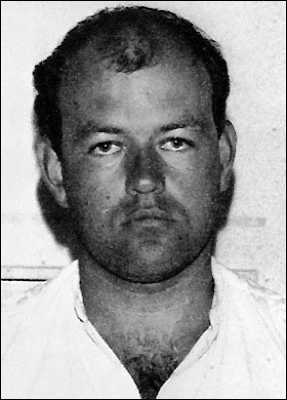
First Person Convicted of Murder Based on DNA Fingerprinting Evidence
On 21 November 1983, a 15-year-old girl named Lynda Mann left her home in Narborough, Leicestershire, England, to visit a friend’s house and never returned. The next morning, Lynda was found raped and strangled on a deserted footpath known locally as the Black Pad. Using forensic science techniques available at the time, police linked a semen sample taken from her body to a person with type A blood and an enzyme profile that matched only 10 percent of males. With no other leads or evidence at the time, the case was left open.
Just under three years later, on 31 July 1986, another 15-year-old girl from Enderby, also in Leicestershire, named Dawn Ashworth took a shortcut instead of her normal route home. Two days later, her body was found in a wooded area near a footpath called Ten Pound Lane. She had been beaten, savagely raped, and strangled to death. The semen samples taken revealed that the perpetrator had the same blood type as Lynda Mann’s killer. The prime suspect was a local 17-year-old youth named Richard Buckland who revealed knowledge of Ashworth’s body. Under interrogation, Buckland admitted to Dawn Ashworth’s murder, but said he didn’t kill Lynda Mann.
In 1986, Alec Jeffreys of the University of Leicester had recently developed DNA profiling along with Peter Gill and Dave Werrett of the Forensic Science Service (FSS). DNA profiling is used to assist in the identification of individuals by their DNA profiles. Using this technique, Jeffreys compared semen samples from both murders against a blood sample from Buckland, which conclusively proved that both girls were killed by the same man, but not Buckland. As a result, Richard Buckland became the first person to have his innocence established by DNA fingerprinting. There is no doubt that without the DNA evidence Buckland would have been sentenced for the murder of Dawn Ashworth.
After the turn of events, the Leicestershire Constabulary undertook an investigation in which 5,000 local men were asked to volunteer blood or saliva samples. This took six months and no matches were found. Later, a man named Ian Kelly was heard bragging to his friends that he had obtained £200 for giving a sample while masquerading as his friend Colin Pitchfork, a local baker. On 19 September 1987, Pitchfork was arrested at his home in Haybarn Close, in the neighboring village of Littlethorpe. His recorded fingerprint DNA sample matched the killer.
Colin Pitchfork admitted to the two murders in addition to another incident of sexual assault. He is the first criminal convicted of murder based on DNA fingerprinting evidence and the first to be caught as a result of mass DNA screening. On 14 May 2009, Pitchfork’s legal appeal was heard at the Royal Courts of Justice in London. He won a two-year reduction in his original sentence of a minimum 30 years’ imprisonment. As a consequence, Pitchfork will now be eligible for release in 2016. The Lord Chief Justice Lord Judge stated, however, that “he cannot be released unless and until the safety of the public is assured.” For a child murderer, this should be never.

First Recognized Survivor of the Hiroshima and Nagasaki Atomic Bombings
During the final stages of World War II in 1945, the United States dropped two atomic bombs on the Japan cities of Hiroshima and Nagasaki. The first landed on 6 August 1945, and the second on 9 August, these two events are the only use of nuclear weapons in war to date. Within the first two to four months of the bombings, the acute effects killed 90,000–166,000 people in Hiroshima and 60,000–80,000 in Nagasaki.
Tsutomu Yamaguchi was a Japanese national who survived both the Hiroshima and Nagasaki atomic bombings. It should be noted that at least 160 people are known to have been affected by both bombings, but Yamaguchi is the only person to have been officially recognized by the government of Japan as surviving both explosions. In 1945, he was a resident of Nagasaki, and in Hiroshima on business for his employer Mitsubishi Heavy Industries when the city was bombed at 8:15am on August 6. When the bomb went off, Yamaguchi was approximately 3 km (1.8 miles) away.
Yamaguchi recalls seeing the bomber and two small parachutes, before there was “a great flash in the sky, and I was blown over.” The explosion ruptured his eardrums, blinded him temporarily, and left him with serious burns over the top half of his body. Yamaguchi did not receive treatment until he got back to Nagasaki the next day. Despite being heavily bandaged, Yamaguchi reported to work three days after the explosion. At 11 am on August 9, he was describing the blast in Hiroshima when the American bomber Bockscar dropped the Fat Man atomic bomb on Nagasaki. Yamaguchi’s location was again 3 km (1.8 miles) from ground zero, but this time he was unhurt by the blast.
When the Japanese government officially recognized atomic bomb survivors as Hibakusha in 1957, Yamaguchi was only identified as being present at Nagasaki. As he grew older, his opinions about the use of atomic weapons began to change. In his eighties, Yamaguchi wrote a book about his experiences and was invited to take part in a 2006 documentary about 165 double A-bomb survivors. At first, he didn’t feel the need to draw attention to his double survivor status. However as he aged, Yamaguchi applied for double recognition. The application was accepted by the Japanese government in March 2009, making Yamaguchi the only person officially recognized as a survivor of both bombings.
In 2009, Tsutomu Yamaguchi learned that he was dying of stomach cancer. He passed away on 4 January 2010 in Nagasaki at the age of 93. On 22 December 2009, Canadian movie director James Cameron and author Charles Pellegrino met Yamaguchi while he was in a hospital in Nagasaki, and discussed the idea of making a film about nuclear weapons. Yamaguchi said, “I think it’s Cameron’s and Pellegrino’s destiny to make a film about nuclear weapons.”
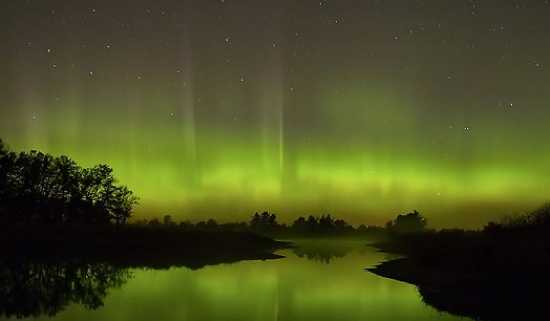
First Observed Solar Flare
A coronal mass ejection (CME) is a massive burst of solar wind. They are often associated with other forms of solar activity, most notably solar flares. A solar flare is a sudden brightening observed over the Sun, which has been interpreted as a large release of energy. The flare ejects clouds of electrons, ions and atoms through the corona into space. These clouds typically reach the earth a day or two after the event. Most ejections originate from active regions on the Sun’s surface, such as sunspots. During the solar maximum, which is the time when the Sun shows the greatest amount of activity, the Sun produces about 3 CMEs every day, whereas near solar minimum there is about 1 CME every 5 days.
The next solar maximum is predicted to occur sometime between January and May 2013. When a coronal mass ejection is directed towards the Earth, the wave of particles can create a geomagnetic storm that may disrupt the magnetosphere. The process can cause strong auroras around the Earth’s magnetic poles, known as the Northern and Southern Lights. Coronal mass ejections and solar flares can disrupt communication lines, radio transmissions, and cause damage to satellites and electrical transmission facilities, resulting in massive and long-lasting power outages on Earth. Humans in space or at high altitudes, in airplanes for example, risk exposure to intense radiation.
The solar storm of 1859 occurred during solar cycle 10. It was the most powerful solar storm in recorded history. The largest flare, observed by Richard Christopher Carrington, became known as the Carrington Super Flare. On 1 September 1859, Carrington and Richard Hodgson, another English amateur astronomer, independently made the first published observations of a solar flare. It should be noted that Scottish physicist Balfour Stewart recorded a super flare on the evening of 28 August 1859, at the Kew Observatory, and presented his findings in a paper on 21 November 1861. Despite this fact, Richard Carrington has been given the designation of being the first to demonstrate the existence of solar flares.
In 1859, the largest flare was caused by a coronal mass ejection directed toward Earth. The CME took only 18 hours to arrive. This is remarkable because such a journey normally takes three to four days. On 1–2 September 1859, the Earth experienced a huge geomagnetic storm. Auroras were seen around the world, most notably over the Caribbean and Rocky Mountain. In the wake of the storm, telegraph systems all over Europe and North America failed. Telegraph pylons threw sparks and paper spontaneously caught fire. Some telegraph systems appeared to continue to send and receive messages despite having been disconnected from their power supplies. A similar event in 2013 could devastate the world’s infrastructure.
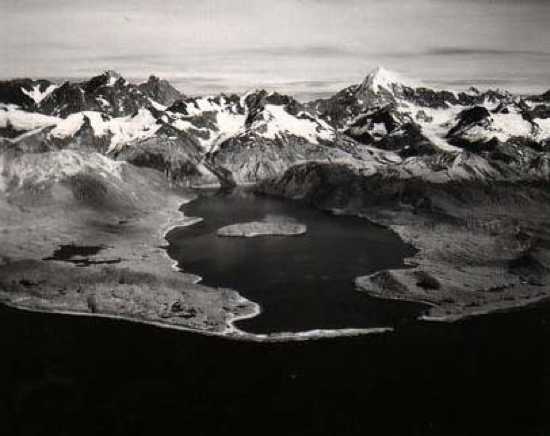
First Eyewitness Report of a Megatsunami
Lituya Bay is a fjord located on the coast of the Southeast part of the U.S. state of Alaska. A fjord is a long and narrow inlet with steep cliffs. The bay is part of Glacier Bay National Park and Preserve. The entrance of the fjord is considered dangerous for ship navigation, especially when the tidal currents are running. The interior of Lituya Bay provides good protection for anchored ships.
In the past 150 years, the area has experienced five megatsunamis. On 9 July 1958, a large earthquake struck Alaska and caused a rock and ice landslide in the Crillon Inlet at the head of Lituya Bay. The falling debris generated a massive megatsunami measuring 524 m (1,719 ft). The rock (30 million cubic meters worth) impacted the bottom of the inlet and formed a large crater. The wave possessed sufficient power to snap all trees up to 1,720 feet (520 m) high around the bay. Most of the trees were spruce and they were 6 feet (1.8 m) thick. The tsunami stripped the soil to the bedrock.
At the time of the megatsunami there were three fishing boats anchored near the entrance of Lituya Bay. One boat sank in the wave and two people were killed. The other two boats were able to ride the waves above the tree line and survive the disaster. Among the survivors were Adam Gray, William A. Swanson and Howard G. Ulrich, who were each able to provide an account of what happened. It has been estimated that the wave was traveling at 600 mph. However, when it reached the open sea it dissipated quickly.
This incident was the first direct evidence and eyewitness report of the existence of megatsunamis. Mathematical modeling studies conducted by Dr. Charles Mader support the rock slide as a triggering mechanism. There is a sufficient volume of water in the Lituya Bay inlet to account for the giant wave and subsequent inundation. One eyewitness account indicates that an enormous piece of the Lituya Glacier moved during the earthquake, and may have fallen into the water. The impact was similar to an asteroid generated tsunami wave. It has allowed scientists to re-evaluate historical events and identify large waves.
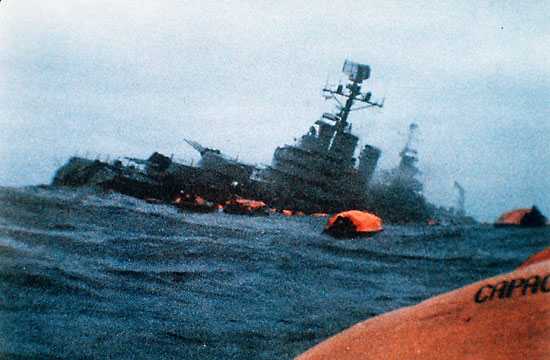
First Ship Sunk in Anger by a Nuclear-Powered Submarine
ARA General Belgrano was a warship that was originally constructed as the USS Phoenix in 1935, and launched in March 1938. The vessel survived the Japanese attack on Pearl Harbor in 1941, and was decommissioned from the US Navy after World War II in July 1946. Phoenix earned nine battle stars for World War II service. USS Phoenix was sold to Argentina in October 1951, with another vessel, for US$7.8 million. The ship was renamed General Belgrano after General Manuel Belgrano, who fought for Argentine independence from 1811 to 1819. The Belgrano was outfitted with the Sea Cat anti-aircraft missile system, between 1967 and 1968.
On 2 April 1982, military forces from Argentina mounted amphibious landings on the Falkland Islands. The event marked the beginning of The Falklands War between Argentina and the United Kingdom over the disputed Falkland Islands, South Georgia and the South Sandwich Islands. After Argentina landed on the Falkland Islands, Britain launched a naval task force to engage the Argentine Navy and Argentine Air Force, and retake the islands by amphibious assault. The conflict ended with Argentina surrendering on 14 June 1982. The islands remain under British control.
The war lasted 74 days. It resulted in the deaths of 255 British and 649 Argentine soldiers, sailors and airmen. On 30 April 1982, the ARA General Belgrano was detected by the Royal Navy nuclear-powered hunter-killer submarine HMS Conqueror. The ship was located just outside the British-declared Total Exclusion Zone of 370 km (200 nautical miles) radius from the islands. The British decided the war ship was a threat and on 2 May 1982, the Conqueror fired three 21 inch Mk 8 mod 4 torpedoes, each with an 805-pound (363 kg) Torpex warhead. Two of the three torpedoes hit the General Belgrano. One of the torpedoes blew off the ship’s bow and the second punched a hole in the side of the ship and exploded in the aft machine room.
Twenty minutes after the attack, Captain Bonzo ordered the crew to abandon ship. In all, 323 people were killed. Argentine and Chilean ships rescued 770 men in the water from May 3 to May 5, 1982. The vessel became the only ship ever to have been sunk in anger by a nuclear-powered submarine and the second sunk in action by any type of submarine since World War II. The first was the Indian frigate INS Khukri, which was attacked by the Pakistani Hangor during the 1971 Indo-Pakistani War. There was a public controversy surrounding the sinking, but in 1994 the Argentine government conceded that the attack was “a legal act of war.”
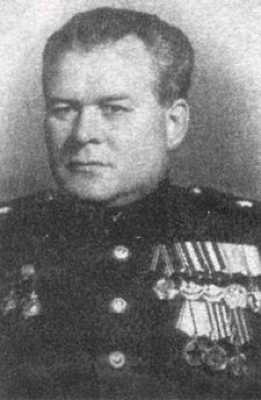
First and Only Person to Execute Over 10,000 People
Vasili Blokhin was a Soviet Major-General who served as the chief executioner for the NKVD (Soviet secret police). He was hand-picked for the position by Joseph Stalin in 1926. Blokhin led a company of executioners that performed and supervised numerous mass executions during Stalin’s reign, most notably during the Great Purge and World War II. Vasili Blokhin is recorded as having personally executed tens of thousands of prisoners by his own hand, including 7,000 condemned Polish POWs in one mass execution, making him the most prolific official executioner in world history.
During his time as executioner, Vasili Blokhin made sure he personally pulled the trigger on all high-profile cases conducted in the Soviet Union. His most infamous act was the April 1940 Katyn massacre, in which Blokhin killed 7,000 Polish officers. The massacre was prompted by Lavrentiy Beria’s proposal to execute all members of the Polish Officer Corps, dated 5 March 1940. The mass executions conducted by Blokhin in Poland were carried out on 28 consecutive nights. He used a specially-constructed basement execution chamber at the NKVD headquarters in Kalinin, Russia (now Tver).
In April of 1940, Vasili Blokhin performed 300 executions per night. He engineered a deranged system in which the prisoners were individually led into a small chamber. The chamber was painted red and was known as the “Leninist room.” The room was specially designed with padded walls for soundproofing, a sloping concrete floor with a drain and hose, and a long wall for the prisoners to stand against. Vasili Blokhin was outfitted with a leather butcher’s apron, cap, and shoulder-length gloves to protect his uniform. He had no procurator present and did not read any death sentences to the victims. Over and over again, Blokhin pushed the prisoner against the wall and shot him once in the base of the skull with a German Walther Model 2 .25 ACP pistol.
The use of a German pocket pistol, which was commonly carried by Nazi intelligence agents, provided plausible deniability of the executions if the bodies were discovered later. Blokhin had his men escort prisoners to the basement, confirm identification, and then remove the bodies and hose down the blood after each execution. He was the primary executioner and, true to his reputation, liked to work continuously and rapidly without interruption. The executions were conducted at night, starting at dark and continuing until dawn. The bodies were continuously loaded on flat-bed trucks through a back door and buried in mass graves. Vasili Blokhin worked without pause for ten hours each night, executing an average of one prisoner every three minutes.
The event is the most organized and protracted mass murders by a single individual on record. On 27 April 1940, Blokhin secretly received the Order of the Red Banner from Joseph Stalin. In 1955, Blokhin sank into alcoholism, went insane, and died, with the official cause being “suicide.” In 1943, the government of Nazi Germany announced the discovery of mass graves in the Katyn Forest. The revelation led to the end of diplomatic relations between Moscow and the London-based Polish government-in-exile. The Soviet Union continued to deny responsibility for the massacres until 1990, when the government officially acknowledged and condemned the event.







